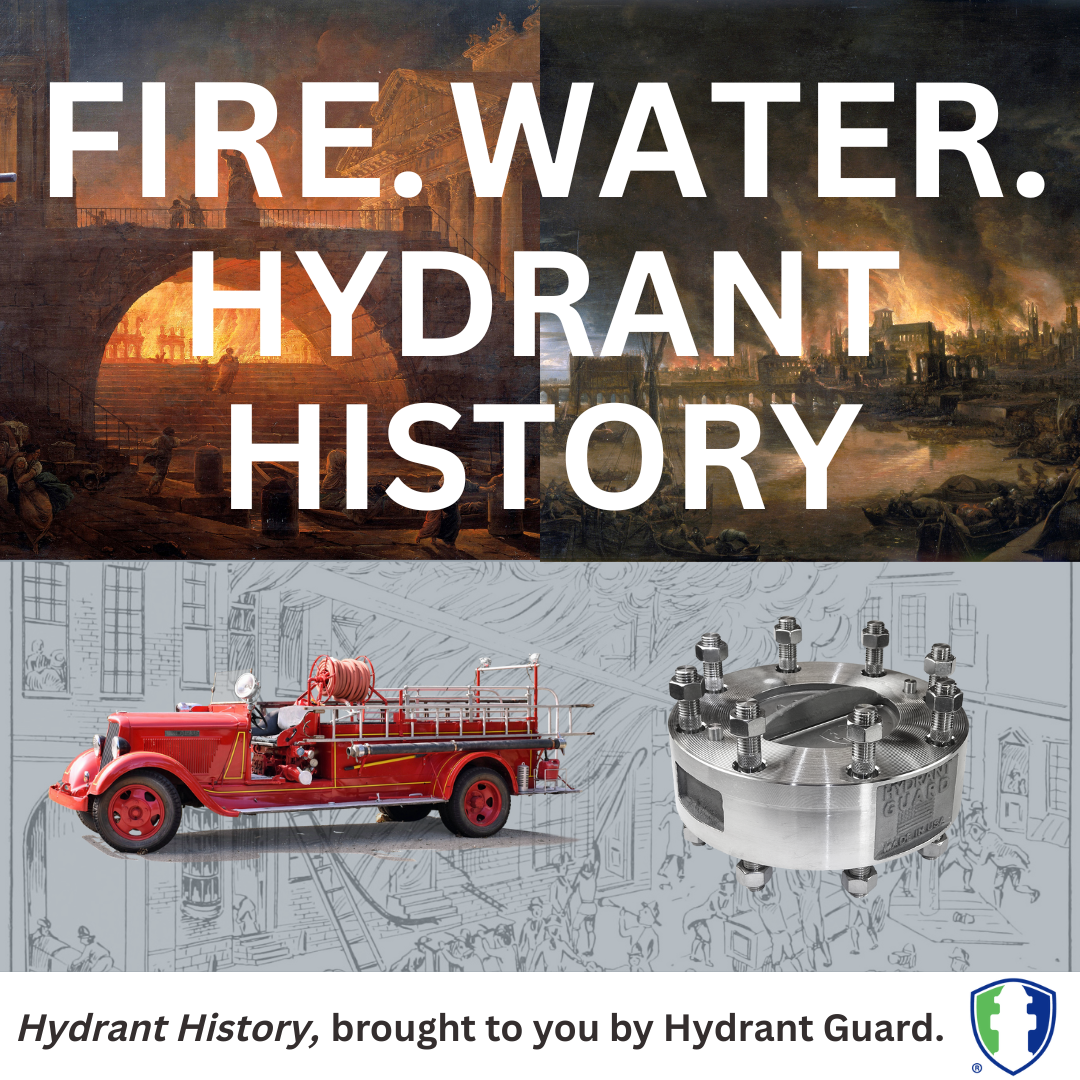Hydrant History: Introduction
A Series on the History of Firefighting, Fire and Water Reform, and Hydrant Technology

Hydrant Guard is grateful for the work of water agencies and fire departments. Our above-grade check valves work with municipal water systems to provide a solution to hydrant shears. Those same water systems have evolved over centuries to become what they are today. In our “Hydrant History” series, we’ll be covering the history of firefighting, municipal water systems and technology, with a spotlight on some of history’s biggest fires.
The first documented firefighters were far from the heroes we now know: in Ancient Rome they would put out fires, but in doing so they would extort huge sums from the owners of the burning property. Marcus Crassus, a Roman statesman, built a massive fortune in this manner by managing the first recorded fire brigade. Luckily, the ethical face of firefighting has changed so dramatically that it’s hardly recognizable.
Fire safety as a civic responsibility has taken millennia to develop into its modern form, and devastating fires have often thrust the important work of fire and water agencies into public view. The job of ‘getting the wet stuff onto the red stuff’ reaches back as far as our control of fire. As soon as people started using fire for light and heat, fire hazards became a permanent threat. Our ancestors crafted vessels for more than just drinking water: bucket brigades, cooperative chains of human hands passing water from sources to fire sites, are as old as settlements.
It may not have seemed obvious to the volunteer firefighters of the past that it would eventually become an esteemed, full-time profession. Or that generations of innovation in hydraulics, material science and urban planning would help municipal water agencies slake the thirst of billions, and firefighters save the lives of millions.
Our next posts will dive into the Great Fires of Rome and London, before moving on to the first American firefighters and the new technologies that helped them protect our founding cities. Along the way, we will learn about the importance of pumps, pressure and, of course, HYDRANTS.
Stay tuned to our “Hydrant History” series for more.

